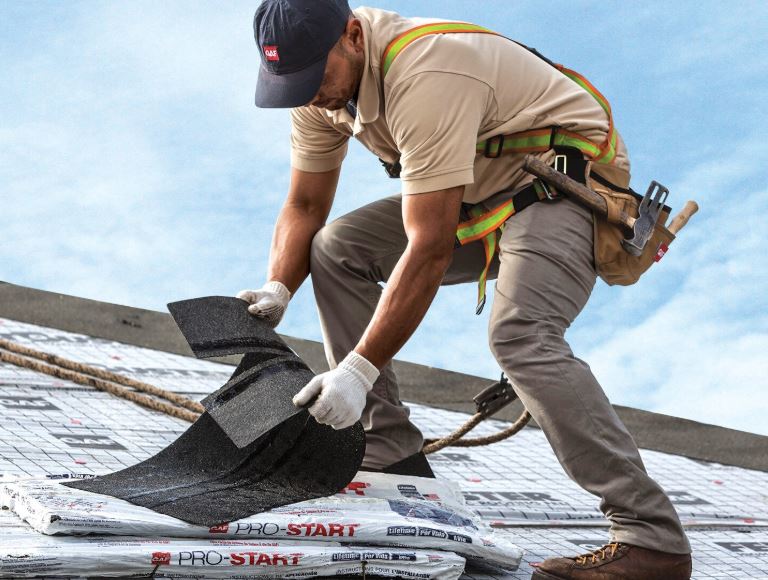
Professional roofing contractors should make your roof installation hassle-free. Here is a quick look at the roofing process in Massachusetts and Rhode Island:
1. Tarp Protection: Crews should tarp the façade and landscaping around the home before removing old roof shingles. This will protect your home from being damaged from roof debris during the stripping process. Debris will be disposed in a dumpster.
2. Roof Deck Inspection: Once the old shingles and underlayments are removed, crews will inspect the roof decking for rot. Any damaged boards will be replaced and all sheathing will be re-nailed.
3. Vapor Barrier, Flashing, and Underlayment: Vapor barrier is also installed along all of the eves, rakes, valleys as well as flashed areas around vent pipes, chimneys, dormers, and skylights. This protects home from wind-driven rains and ice dams. Flashing is inspected around skylights, chimneys, and walls and replaced if necessary. New vent collars are installed around vent pipes. A synthetic underlayment is installed over the entire roof deck to provide an additional layer of protection between the roof deck and the roof shingles.
4. Aluminum Drip Edge: Installed along the eves, aluminum drip edge improves the efficiency of water shedding, prevents leaking from a wind-driven rain as well as movement between the deck and fascia boards. It also keep insects from infiltrating the space between the roof deck and the fascia boards
5. Starter Course Shingles: To prevent shingle blow off, ultra-adhered starter course shingles are installed to keep your roof properly secured during a storm. Beware of the amateur roofer who will often use cut-up shingles as a starter course. This lowers wind resistance and makes roofs more susceptible to both wind and water damage.
6. Shingle Installation: Once the previous components have been installed, it’s time to install your new roof shingles! Contractors should maximize roof wind ratings to 130 mph by using a specific hurricane nailing pattern.
7. Ridge Vent: A ridge vent is cut into the top of your roof to provide proper ventilation. This helps prevent moisture buildup, mold and regulates temperature to prevent ice damming. Some homes may eliminate the need for a ridge vent by using gable vents.
Roofing services available from Fairhaven to Cape Cod, New Bedford and Fall River, Providence and more…


